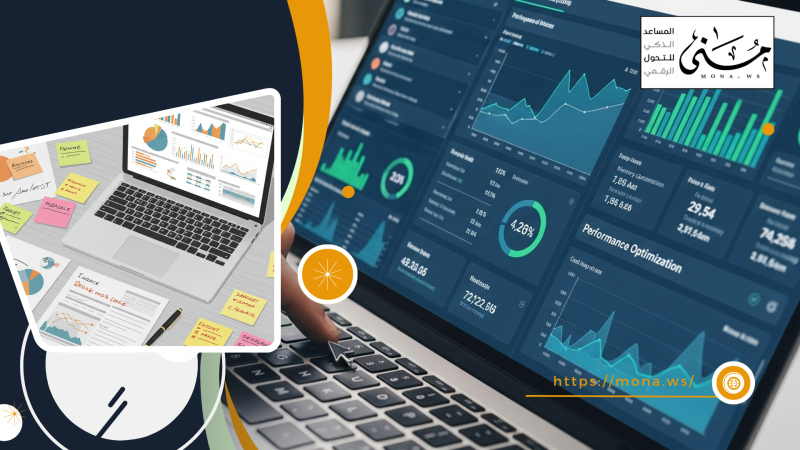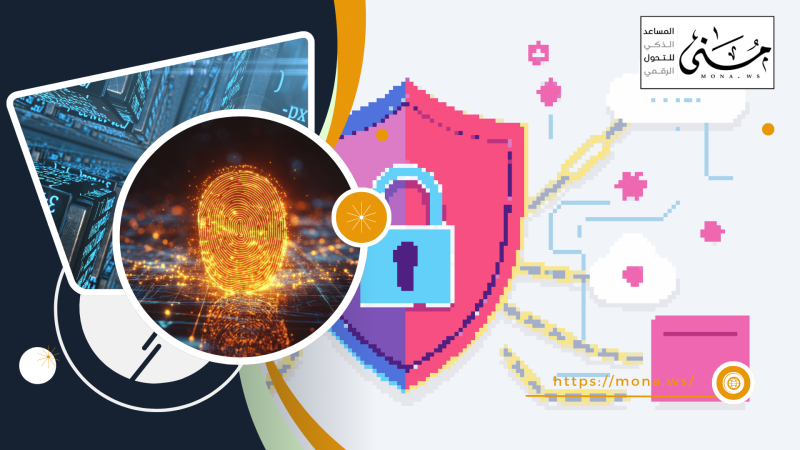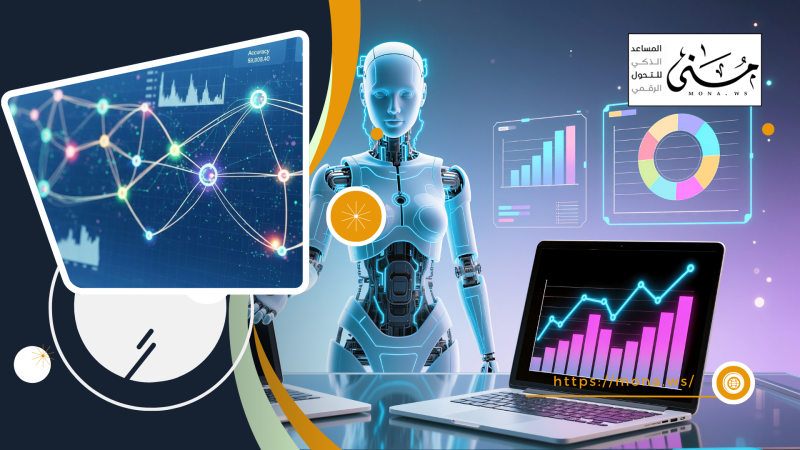Employing innovation has become an essential part of improving human resource management, as it helps improve recruitment processes, develop the work environment, and enhance employee experiences. By using modern technologies and new ideas, organizations can speed up procedures, increase training efficiency, and improve decision-making, which contributes to increased productivity and job satisfaction.
You can continue reading the article to find out more information.

About Innovation Employment and Important Statistics
Employing innovation has become a vital tool that reshapes human resource management methods in modern organizations. Human resource management is no longer just managing routine operations or balancing work requirements with employee needs, but has turned into a strategic platform that contributes to enhancing competitiveness and institutional innovation.
- Recent studies indicate that organizations that employ innovation in human resource management achieve a 45% increase in employee satisfaction compared to traditional organizations.
- About 78% of companies that employ innovation and digital transformation in their recruitment processes achieve better results in talent selection compared to traditional methods.
- AI technologies in HR management can reduce the time required for recruitment processes by up to 60%.
These figures underscore the importance of employing innovation as a means of improving performance and achieving strategic objectives.
System development and its role in improving human resources
With the rapid development of technology, innovative tools and techniques have emerged that have radically changed the methods of managing human resources, including:
Recruitment automationDigital platforms and artificial intelligence are now able to analyze resumes and make initial assessments faster and more accurately.
Specialized trainingTechnologies such as e-learning and virtual reality enable the delivery of personalized training content focused on the needs of each employee.
Performance ManagementDigital tools help accurately analyze employee performance, helping organizations provide the necessary support and improve operational efficiency.
DocSuite is one of the most prominent digital tools that can contribute to employing innovation in human resources management. This system is an integrated platform for managing documents and administrative communications, which makes it easier for companies to improve all processes related to human resources.
Challenges in Employing Innovation in Human Resources
Employing innovation in human resources is an important strategic step to achieve the goals of institutions, but it faces a set of challenges that may affect the effectiveness of these efforts. The following is an explanation of the most prominent of these challenges:
- Resistance to cultural change within the organization
Organizations that rely on traditional methods may face resistance from employees or management to adopting new technologies and methods. This resistance stems from fear of losing jobs due to automation or concern about not being able to deal with modern technologies.
To solve this challenge, organizations must provide comprehensive training programs to build employee confidence and explain the long-term benefits of employing innovation.
- High costs of employing innovation
Implementing modern technologies such as artificial intelligence or cloud systems requires significant financial investments that include purchasing software and hardware, training employees, and maintaining these systems.
To overcome this challenge, companies can employ innovation gradually or collaborate with specialized companies that offer innovative solutions at competitive prices.
- Lack of technical skills in human resources
Employing innovation depends largely on the availability of qualified human competencies to manage and apply modern technologies. However, some organizations may suffer from a shortage of employees who possess the required technical knowledge.
To address this challenge, organizations can invest in technical skills development programs such as training on modern HR management systems or predictive analytics techniques.
- Difficulty measuring return on investment
It can be difficult for organizations to quantify the immediate benefits of HR innovation, especially if these benefits appear in the long term such as improved employee productivity or reduced employee turnover rates.
This problem can be addressed by developing key performance indicators (KPIs).KPIs) focus on assessing the direct and indirect impact of implementing innovative technologies.
- Legal and Regulatory Challenges
Using innovation recruitment in HR may require the collection and analysis of personal data about employees, which raises questions about compliance with data protection regulations such as the General Data Protection Regulation (GDPR).GDPR).
To meet this challenge, organizations must adhere to privacy policies and employ cybersecurity technologies to protect employee data.
- Innovation adoption varies across departments
Some HR departments may be more willing to employ innovation than others, creating a gap in the level of progress between departments.
The solution lies in designing an integrated strategy for implementing innovation that includes all departments, with clear goals for each department to achieve balanced implementation.
- Adapting to rapid changes in technology
Technologies are constantly and rapidly evolving, making it difficult for organizations to keep up with these changes and adopt the latest solutions immediately.
This challenge can be met by building partnerships with technology service providers that are flexible and able to provide innovative solutions.
- fear of losing the human touch
Adopting innovation hiring can lead to an over-emphasis on data and automation, which reduces the human aspects of dealing with employees such as listening to their problems or building strong personal relationships.
To avoid this, innovation should be used to enhance human work rather than replace it, with a focus on tools that support effective communication between employees and management.
- International Cultural Challenges
In international organizations, HR teams may face challenges in employing innovation due to differences in cultures and laws between countries.
The solution is to design flexible systems that adapt to the local requirements of each market.
- Difficulty managing and analyzing data effectively
Collecting and analyzing big data can be complex and require specialized tools and software, and organizations may lack the skills to manage this data effectively.
To overcome this challenge, one can invest in intelligent systems such as predictive analytics and artificial intelligence that facilitate the data management process.
Innovation and its role in employee performance management
Employing innovation has become an essential part of improving employee performance management, as modern technologies such as artificial intelligence and predictive evaluation systems can help analyze employee performance accurately and comprehensively. These tools allow management to set individual goals and compare them to employee performance, which contributes to developing customized development plans.
These technologies also help reduce human bias in evaluation, which enhances employee confidence and encourages them to continuously improve their productivity.
The biggest challenge facing organizations today is attracting scarce talent that requires specialized skills. Here, employing innovation plays a big role through the use of technologies such as big data (Big Data) and predictive analytics to identify the best candidates based on the organization's needs.
In addition, targeted recruitment campaigns on social media platforms are used to attract the right people in an innovative and unconventional way. AI-based “headhunting software” can also be employed to analyze market data and quickly suggest the best talent.
Innovation in improving employee mental health
With the increasing mental health challenges in the workplace, employing innovation as a solution to improve the mental health of employees comes. Organizations can use mental health apps that provide psychological counseling, meditation sessions, and mood-enhancing exercises.
Also, using artificial intelligence to analyze indicators of psychological burnout based on employee behaviors helps in early intervention and reducing stress levels.
This aspect enhances employee loyalty and reduces employee turnover rates, which positively impacts overall performance.
By integrating AI and digital transformation technologies, DocSuite helps speed up hiring processes, organize employee profiles, and effectively analyze data to support strategic decision-making.
Thanks to its ease of use and flexibility, organizations can improve employee experiences and provide a more integrated and transparent work environment, which enhances the culture of innovation within the organization.
The role of innovation in achieving institutional sustainability
Innovation in human resources management is not only to achieve current goals, but also to ensure the sustainability of the organization in the future. Innovative tools can be employed to achieve sustainability, such as:
Human resource tracking and development systems to balance market needs with available talent.
Use predictive analytics techniques to anticipate changes in organizational needs and adapt human resources accordingly.
Design sustainable AI-based training programs to improve employee performance in the long term.
These topics keep pace with modern trends and attract the attention of researchers and those interested in developing human resources strategies using innovation.
Employing innovation in human resources management is no longer an option, but a necessity to achieve efficiency and excellence in the work environment. By adopting modern technologies and creative ideas, organizations can enhance their productivity, develop their staff, and achieve their strategic goals. With tools like DocSuite, digital transformation and innovation become the foundation for effective human resources management that keeps pace with the challenges of the era and supports sustainable success.
 يسهم توظيف الابتكار في تعزيز التعاون بين الموظفين من خلال منصات رقمية
يسهم توظيف الابتكار في تعزيز التعاون بين الموظفين من خلال منصات رقمية










Comments
Add New Comment